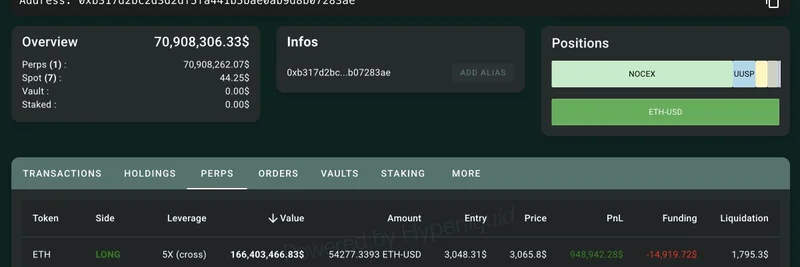Hey there, crypto enthusiasts! If you’ve been keeping an eye on the decentralized finance (DeFi) space, you might have heard about a recent security incident involving GMX, a popular perpetual futures trading platform. The team at BlockSec dropped a bombshell on July 9, 2025, with their initial analysis of an exploit that hit GMX’s order-keeper account. Let’s break it down in a way that’s easy to digest, even if you’re new to the blockchain world.
What Happened with GMX’s Order Keeper?
According to BlockSec’s tweet, the trouble started with a transaction from GMX’s order-keeper account (address: 0xd4266f8f82f7405429ee18559e548979d49160f3). This account, which is responsible for executing orders on the platform, passed a contract address as the first parameter in a function called executeDecreaseOrder. Sounds technical, right? In simple terms, this function is supposed to handle the reduction of an open trading position. However, an attacker jumped in and used a sneaky tactic known as a reentrancy attack to pull off the exploit.
A reentrancy attack happens when a malicious contract calls back into the victim’s contract before the original function finishes executing. Think of it like interrupting someone mid-sentence to trick them into giving you more than they intended! In this case, the attacker leveraged this vulnerability to siphon funds or manipulate the system—details are still emerging, but it’s a classic move in the DeFi hacking playbook.
Digging Deeper: The Attacker’s Strategy
Another tweet in the thread clarifies that the order keeper itself wasn’t compromised. Instead, the exploit came from a contract created by the attacker, which tricked the system into processing a malicious order. This is a clever twist—rather than hacking the keeper directly, the attacker used a custom contract to exploit a weakness in how executeDecreaseOrder handles external calls.
For those familiar with smart contracts, this points to a potential flaw in the function’s logic or lack of a reentrancy guard. A reentrancy guard is like a lock that prevents a contract from being called again until the current operation is complete. Without it, attackers can keep re-entering the contract to drain funds, as seen in infamous incidents like the DAO hack back in 2016.
What This Means for DeFi and Blockchain Security
This incident is a wake-up call for the DeFi community. GMX, built on the Arbitrum blockchain, is known for its decentralized approach to perpetual trading, giving users control over their funds. But as this article from Georgia Tech points out, even the best DeFi platforms can be targets for hackers if vulnerabilities exist. The lack of centralized oversight, while a strength, also means there’s no quick fix when things go wrong.
Reentrancy attacks aren’t new—past exploits like the dForce hack in 2023 show how devastating they can be. TechTarget’s guide suggests adding reentrancy guards and carefully managing external calls as key defenses. For GMX, this might mean a code audit or an upgrade to patch the vulnerability.
What’s Next for GMX and the Community?
As of 12:21 AM JST on July 10, 2025, the full scope of the damage isn’t clear yet. But the blockchain community is buzzing, with experts like those at BlockSec and xdev_10 leading the charge to understand the exploit. If you’re a meme token trader or a blockchain practitioner, this is a great opportunity to brush up on smart contract security. Check out resources like Medium’s reentrancy explanation or dive into GMX’s GitHub repo (gmx-io/gmx-contracts) to see how the platform works under the hood.
At Meme Insider, we’re all about keeping you informed on the latest in blockchain tech, especially when it intersects with the wild world of meme tokens. Stay tuned as we follow this story and bring you more updates. Got questions or thoughts? Drop them in the comments—we’d love to hear from you!



